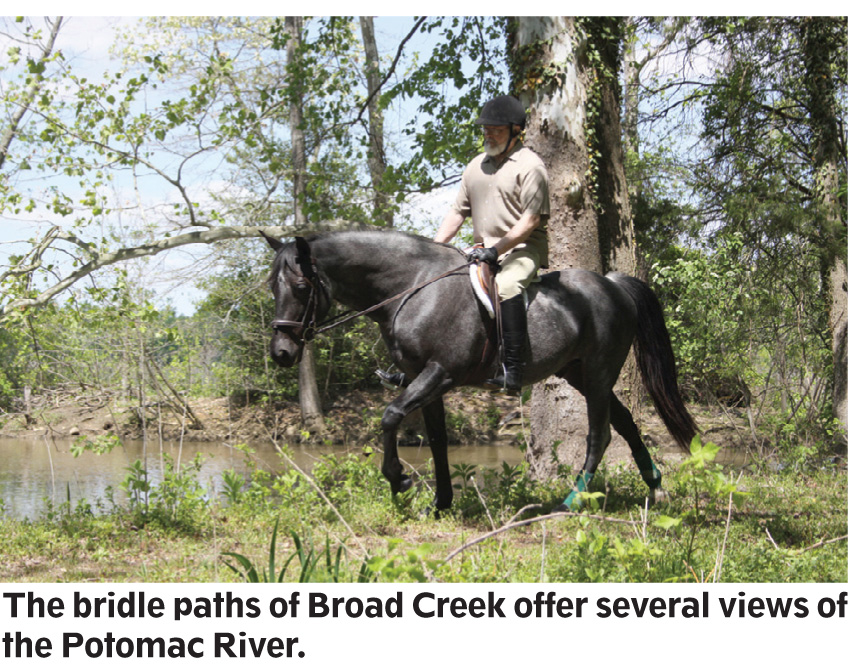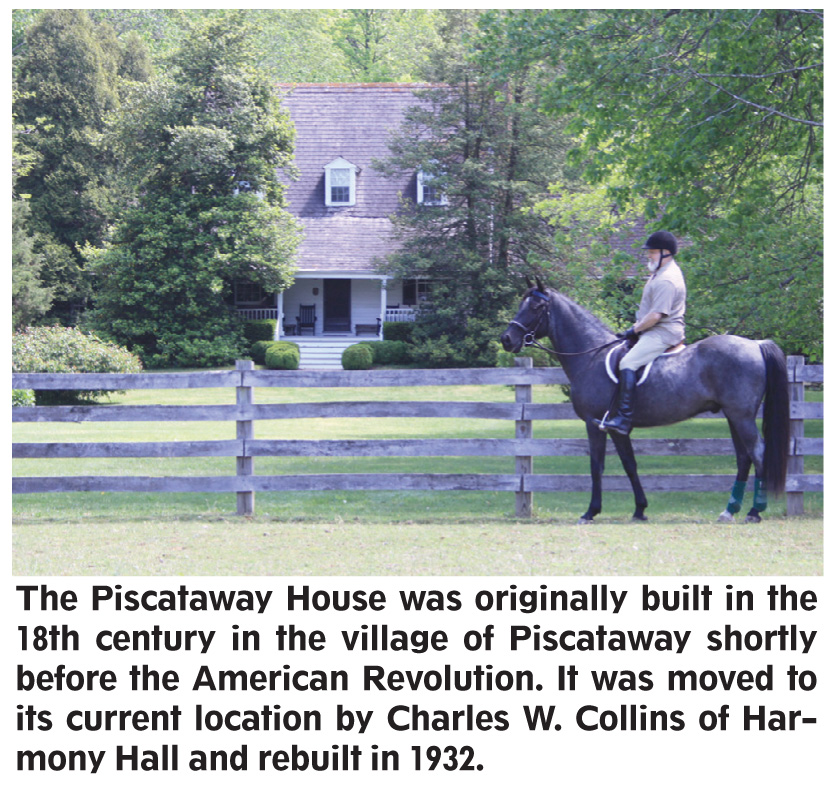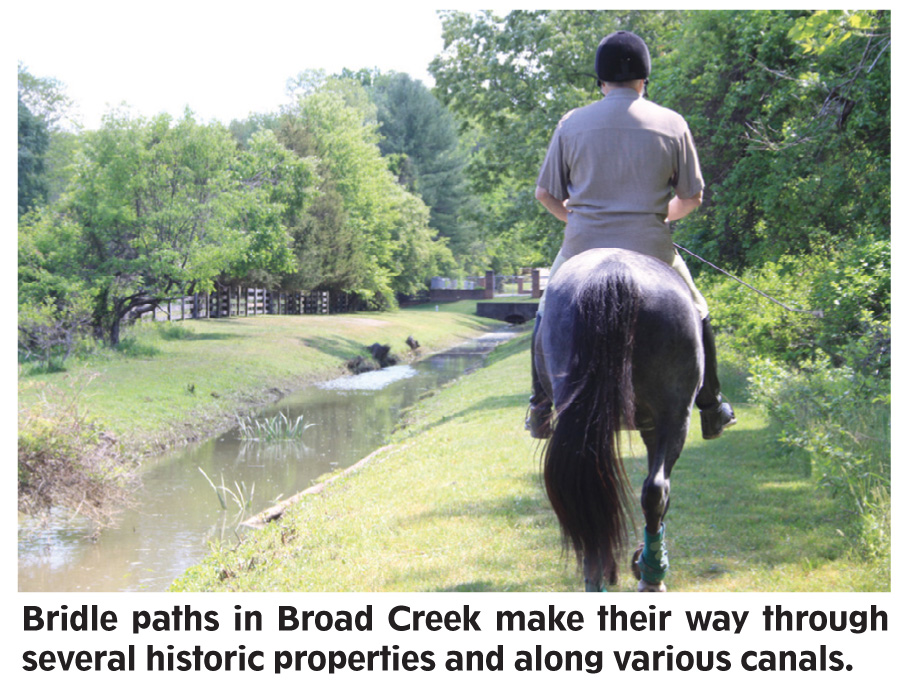(first appeared in the The Equiery‘s July 2012 issue)
by David A. Turner with photos by Katherine O. Rizzo
 On this month’s Equiery cover are Randy Crawford, riding his trail horse Grady, and Crawford’s partner Dave Turner, holding U.S. Senator Mary Landrieu’s trail mare, Miss Oreo. Randy and Dave are the owners of Mieza in Prince George’s County. Crawford’s gelding is descended from the same Tennessee Walking Horse stock used at nearby Harmony Hall Plantation by owners Charles Wallace Collins and his wife Sue Steele Collins in the 1920s.
On this month’s Equiery cover are Randy Crawford, riding his trail horse Grady, and Crawford’s partner Dave Turner, holding U.S. Senator Mary Landrieu’s trail mare, Miss Oreo. Randy and Dave are the owners of Mieza in Prince George’s County. Crawford’s gelding is descended from the same Tennessee Walking Horse stock used at nearby Harmony Hall Plantation by owners Charles Wallace Collins and his wife Sue Steele Collins in the 1920s.
Too often, our beloved neighborhood riding paths, used daily by backyard horse owners and at riding stables, receive scant attention in discussions and articles about trail riding. But for most of us, the first steps in our lifelong romance with horses were taken along just such paths. Communing alone with that first horse on a safe, tree-lined path was the magic that bound us to our sport. These sacred places are taken for granted.
 When experts expound on “much-needed infrastructures for the future of the horse industry” they overlook these treasures. Bridle paths are the backbone of the pleasure horse and show horse world. Without these trails, there are only riding courses and rings where knowledgeable instructors and colleagues scrutinize each and every move, an acquired pleasure. Many of Maryland’s public trails started out as bridle paths. In the 20th century, forced from public roads by automobiles, asphalt and bicyclists, determined equestrians established bridle paths.
When experts expound on “much-needed infrastructures for the future of the horse industry” they overlook these treasures. Bridle paths are the backbone of the pleasure horse and show horse world. Without these trails, there are only riding courses and rings where knowledgeable instructors and colleagues scrutinize each and every move, an acquired pleasure. Many of Maryland’s public trails started out as bridle paths. In the 20th century, forced from public roads by automobiles, asphalt and bicyclists, determined equestrians established bridle paths.
In Maryland, no existing bridle path is older than the one in historic Broad Creek on the Potomac River near Washington, DC. It runs along a 1660s colonial roadway, the first footprint of transportation in the National Capitol area. Here, every ride promises sightings of fox, blue heron, wild turkeys or deer. This is remarkable because it lies only nine miles from the U.S. Capitol Building.
 Equestrian history in the tiny Prince George’s community has been continuous for 350 years. High points include the formal carriage route of the prominent Addison family in the 1670s and early steeplechases from the village to the nearby Anglican church. In the federal era, Broad Creek was an importation point where new Thoroughbred breeding stock from Alexandria, Williamsburg, Norfolk and Dinwiddie was shipped to race tracks and farms in Upper Marlboro, Baltimore and central Maryland.
Equestrian history in the tiny Prince George’s community has been continuous for 350 years. High points include the formal carriage route of the prominent Addison family in the 1670s and early steeplechases from the village to the nearby Anglican church. In the federal era, Broad Creek was an importation point where new Thoroughbred breeding stock from Alexandria, Williamsburg, Norfolk and Dinwiddie was shipped to race tracks and farms in Upper Marlboro, Baltimore and central Maryland.
Today, Broad Creek’s bridle path is seldom more than eight feet wide, one to two miles long, with natural footing, and dotted with small wooden bridges where Potomac River tributaries flow much of the year. At one point, archeologists discovered a stretch of colonial brick-paver roadbed beneath the earthen path. Like other bridle paths, it is used by residents or by invitation and its existence depends upon the goodwill of cooperative landowners and St. John’s Episcopal Church of Broad Creek. Instead of street numbers, homes in modern Broad Creek tend to have names like Harmony Hall, Piscataway House, Kituchcia, Emma Place and Mieza.










